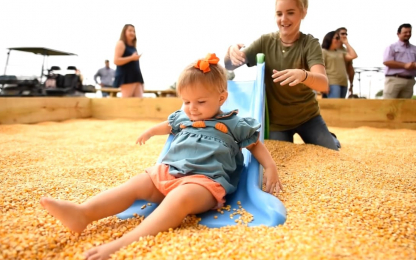North Carolina ranks second in the country for growing Christmas trees, and Appalachian Christmas Mountain’s farms offer an ideal conditions for growing these holiday favorites
An ideal location
Appalachian Christmas Mountain farmers Jessie Davis, Cale Smith and Russell Estes came together to market and sell Christmas trees, which they have grown for over 20 years in the northwest corner of North Carolina. North Carolina ranks second in the country for growing Christmas trees, and Appalachian Christmas Mountain’s farms offer an ideal conditions for growing these holiday favorites. Together, Jessie, Cale and Russell have wholesale, retail and a choose-and cut-operation.
The business of Christmas trees
Over the past several decades the Appalachian Christmas Mountain growers have experienced and weathered shifts in the Christmas tree landscape. When faced with a challenging economic landscape, they turned to AgSouth Farm Credit for support.
As Jessie puts it: “Back when the economy had a major downturn several years ago, a lot of the banks were not willing to lend to farm operations … it was really becoming very difficult to work with other banks. When we went to Farm Credit, they understood our situation just right off the bat, and they understood farming, they understood Christmas trees. And I think it’s been a very, very good experience for us.”
A long-term strategy
Farming Christmas trees requires long-term strategy with all upfront initial expenditures followed by years of waiting for the return on investment. Some trees can take 15 years to reach maturity for the market. AgSouth Farm Credit brought that understanding and expertise to the table in working with Appalachian Christmas Mountain. Russell appreciates the relationship they’ve had for the past decade. “They’re genuine honest people to deal with, they help you, and they’ve never let us down.”
Looking forward
Looking toward the future, Jessie has eyes on agritourism. “With AgSouth Farm Credit, we’re trying to expand our business and offer a choose-and-cut where we have our customers actually come to our farm, they tour our farm.” This could open the opportunity for additional revenue streams for the producers once customers are on site, as well as community engagement.


